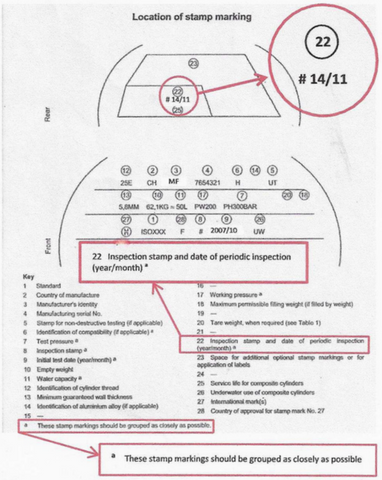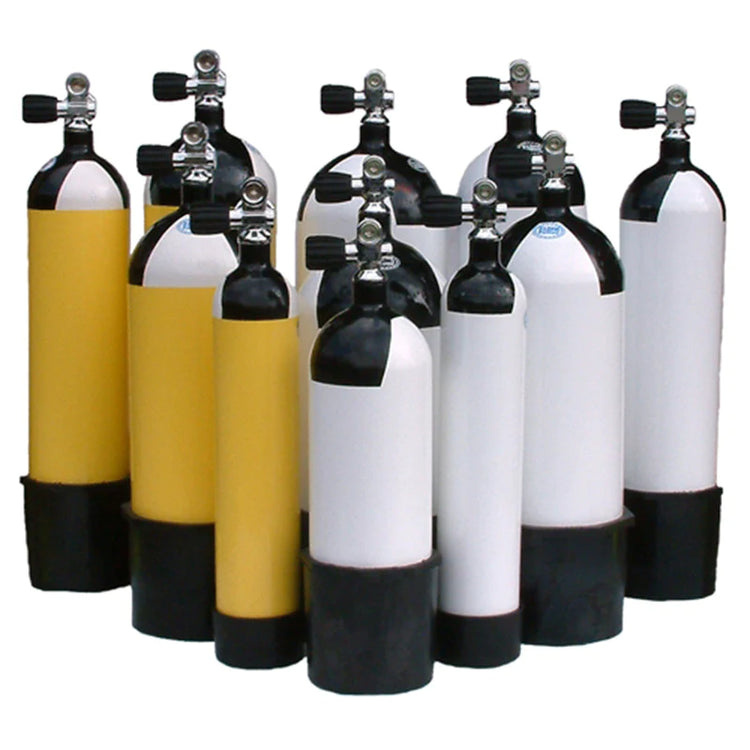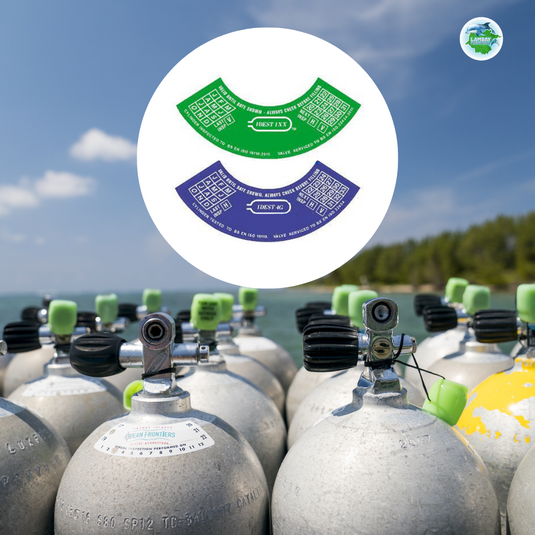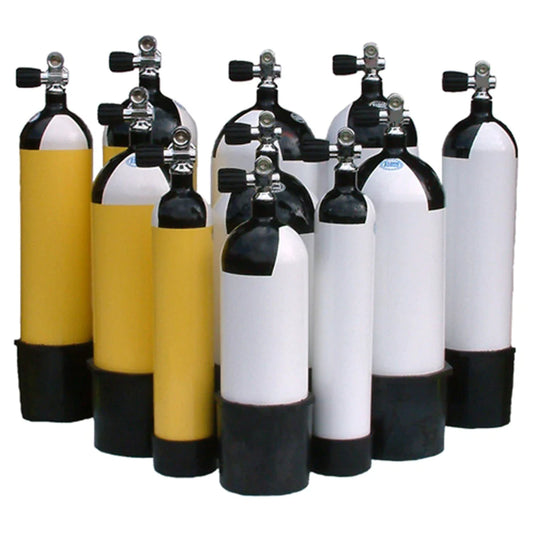Stamping of Cylinders
It has come to our notice that Test Centres have a variety of methods of stamping customer cylinders with the test date. Stamping a cylinder incorrectly can cause technicians confusion at other dive centres when they are checking the cylinder prior to filling. Other Test Centres also complain that a cylinder has been incorrectly stamped by another Test Centre, some of them being IDEST centres.
The method that should be followed is that specified in BS EN ISO 13769:2018
Below is an extract from the standard clearly showing the layout of the stamp details to be added to a cylinder's shoulder.

Providing the cylinder passes the pressure test, whether it is a Volumetric or Proof test, then the stamp marking must be punched into the shoulder of the cylinder.
Paint should be removed using a scraper or other suitable method. The stamp is then punched into the metal of the shoulder using 5 mm metal punches and a hammer to apply the force. A thin coat of paint should be applied to protect the cylinder but not so thick as to obscure the stamp details.
The format of the stamps consists of the TEST HOUSE LOGO, in our case an IDEST logo containing the test center ID number. This is followed by the YEAR that the pressure test was passed: a SLASH marker and finally the MONTH.
The test centre logo must be clearly stamped so that it can be identified during the next five years. Care must be taken to punch the stamp squarely, otherwise double punching can cause distortion. A solid "anvil" should be used, such as a piece of channel securely fixed to avoid vibration.
After 2012, because there is no month 13: the "20", in the year stamping, may be omitted. The month must also be punched, with a leading zero for the months less than 10. Visual inspections will not require a stamps after 2018, but will be identified by the use of an IDEST Green Quadrant sticker, suitably punched out.





